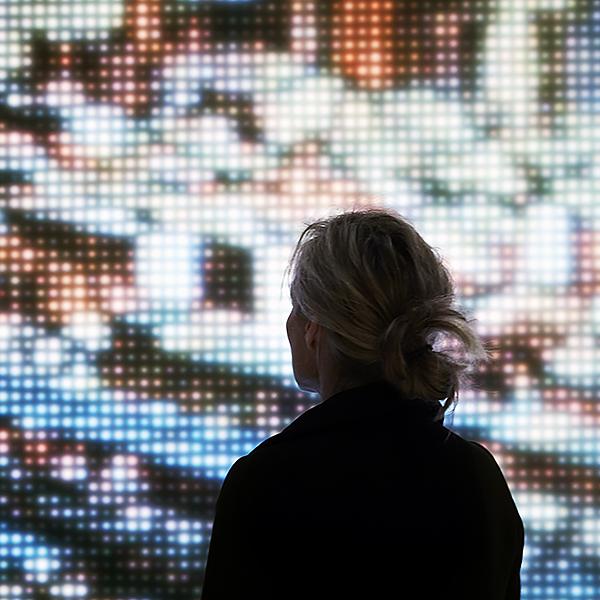#COVIDStoriesNYC: Students as Curators and Photojournalists
Tuesday, May 5, 2020 by
The Museum of the City of New York’s Frederick A.O. Schwarz Education team has been hard at work brainstorming how we can best serve teachers and students during the move to remote learning. This is the second in a series of Education posts on the MCNY Stories page highlighting how the museum’s resources—from digital collections, to lesson plans, to professional development opportunities—can help teachers and students navigate the waters of online learning during the COVID-19 pandemic.
Students learn by making connections to their own lives and experiences. Meet them where they are and let them assume the role of curator or photojournalist by drawing on the Museum's #COVIDStoriesNYC initiative to create a timely, culturally responsive, creative classroom project.
Below are a few ideas for how you could lead a #COVIDStoriesNYC project with your students. Use a shared folder, Google slideshow, class Twitter hashtag, or other online platforms to create your very own gallery space. And feel free to adapt these suggestions to meet your needs. These projects work well for any grade level and a number of subject areas: Social Studies, English Language Arts, ENL, Science, or Art!
Did any of your students take an amazing photo of life in NYC right now? Encourage them to contribute to the Museum’s city-wide call for images by posting it to social media with the hashtag #COVIDStoriesNYC and tag @MuseumOfCityNY.
Students as Photojournalists
- Build on the lesson plan “Houses of Welcome: The Settlement House Movement, 1890-1925,” which details the work of Progressive Era photojournalist Jacob Riis. Through his photography, Riis advocated for improved health care and living conditions for the mainly immigrant communities of the Lower East Side—though he himself was an outsider to those neighborhoods. Encourage your students to document health and living conditions in NYC during the COVID-19 pandemic by using their phones or devices to take photographs of their homes and/or neighborhoods (during a socially distanced walk, of course). The images should capture a specific facet of life during self-isolation, and include a written commentary advocating for a specific change in public policy. For older students, this is also an opportunity to read current articles that examine how the pandemic exposes and exacerbates inequalities along lines of race and class in the city and around the world. We recommend this one on how coronavirus fatalities reflect New York’s economic divide, and this one about how the virus both mirrors and fuels inequality globally.
- The New York City Young Lords knew the value of working with the media. They expertly drew on the skills of photographers such as Hiram Maristany, journalists, and documentarians to publicize their creative direct actions during the late 1960s and early 1970s. Draw on the lesson plan “Power to all Oppressed People: The Young Lords in New York, 1969-1976” to consider how the Young Lords used the power of images to advocate for self-determination, health justice, and liberation for Puerto Ricans and other working-class people of color at home and abroad. Create a class gallery of these images, or a class periodical along the lines of the Lords’ publication Palante!
Students as Gallery Curators
- How can objects and images tell the dynamic and eclectic stories of New Yorkers? This question animates the exhibition Collecting New York Stories: From Stuyvesant to Sid Vicious. Use this companion article and recorded interview with Sean Corcoran, Curator of Prints & Photographs at the Museum, along with the #COVIDStoriesNYC project, to invite your students to become curators for a class gallery installation. What object or image captures their story at the moment? Pair this question with a writing assignment that engages your content area’s essential questions and/or content goals, whether it be a socio-political analysis for 12th graders, a reflection on the definition of “community” for early elementary students, or a personal testimony or poem that engages English Language Arts standards. Including personal narratives and a creative art project in a lesson on data analysis is also a helpful way to invest students in STEAM content.
*Classroom management tip: make sure students submit their photos to you first before they are made public to the whole class. We trust students, but also suggest screening for any potentially inappropriate material.
Image Credit: Sally Davies. "Rearview, From My Apartment on East 5th Street," 2018. Inkjet print. Museum of the City of New York. Gift of Sally Davies, 2019. 2019.9.12.
New York City students have #COVIDStories to tell. We hope these project ideas will serve as a catalyst for creativity, processing, and the documentation of city life during this challenging time.
Hey NYC teachers, we want to hear from you! What do you need as an educator right now? How can the Museum help? Let us know by sending your questions, suggestions, and feedback to pd@mcny.org.






